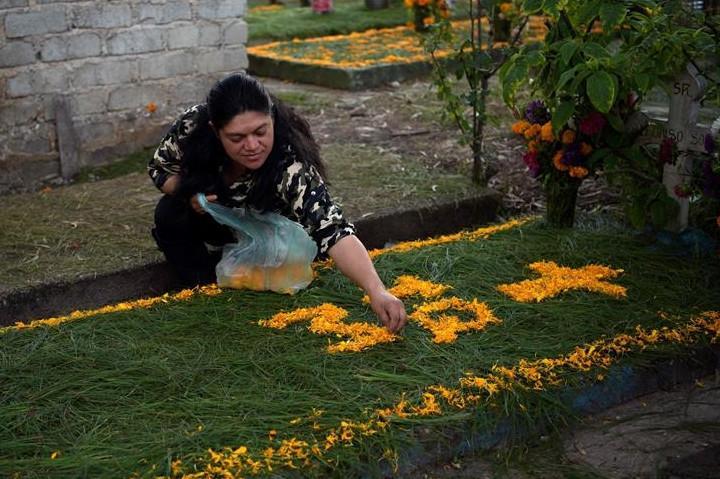
A woman places cempasuchil (Mexican marigold) flower petals on a grave during the Day of the Dead commemoration in Mexico. Photo: (AFP)
Major Mexican cities like Mexico City, Guadalajara and Morelia are teeming with life for Day of the Dead celebrations, but the real magic takes place in small towns throughout the country.
Day of the Dead, or Dia de los Muertos, is a holiday when Mexican families welcome their deceased family members back to their homes. While the holiday is celebrated in several countries throughout the world, it's most strongly associated with Mexico.
It originates from ancient Aztec traditions and takes place from Nov. 1 to 2.
Traditionally, families set up altars in their homes with their deceased family member's photo and favorite drinks, food, and belongings. A typical altar for a deceased family member will also include candles and Mexican marigolds, which are bright, orange flowers.
It's believed that during the two-day holiday spirits are able to go back to celebrate with the living world. Prayers and food and drink offerings are thought to encourage the dead to come back and visit their family members.
The event is a lively time. People paint their faces to appear like skeletons and put bright flowers in their hair. The streets are flooded with artisans selling skulls, which are brightly painted and often smiling. The smell of traditional Mexican food and sweet breads, known as “bread of the dead,” wafts in the air.
Although major Mexican cities welcome foreigners from all over the world during these days and have large parades and celebrations, the more traditional festivities take place in small towns. The most famous pueblo (town) for Day of the Dead is Patzcuaro, Michoacan, which is the town that inspired the Disney Pixar movie “Coco.”
But similar celebrations take place in numerous small pueblos, such as San Andres Mixquic, which is located a little over an hour south of the center of Mexico City. Thousands visit to walk through the town, which is decorated from top to bottom for the celebration.
The town holds events for visitors, like traditional indigenous dances and a game of “ulama,” a MesoAmerican ball game. On Nov. 1 night in Mixquic, the town held a game of ulama with the ball set on fire.
Meanwhile, families in the pueblo leave their doors open for visitors. With a quick request for permission to enter, visitors are welcomed in to see the families' altars. The families will explain the significance of each item on the altars.